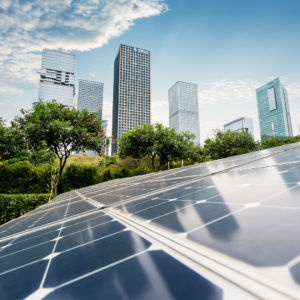Landscape architect and educator Michael Van Valkenburgh has left a large mark on cities across North America, Europe and Asia. In this exchange with Catalyst editor William McKenzie, he shares his thoughts on creating sustainable environments. And he describes how parks can provide enjoyment for people, improve an urban center’s environment, and even create a new identity for a city.
Question: You have said that a 21st-century park is about ecology and resilience “and a totally different, visceral, bodily experience.” What does that mean?
Van Valkenburgh: People not only want to see landscape as scenery but also feel its power by being in it. These days, people want a more activated park experience through the range of experiences the park offers, and by the robustness of the things you can do — steep hills, climbing walls and challenging water courses. Teens want zip lines and everyone wants to play sports in parks, and all recognize that city parks are designed, rather than a preserved piece of pre-urban land.
Q: But cities have only a limited amount of public and private capital. How do you make the case for parks being a priority investment?
Van Valkenburgh: That case has been made again and again by the success of cities with strong park systems, and the increased value of park-adjacent properties. A park doesn’t have to be expensive to be good, but it does have to be thoughtful. For a park to be a place for everyone, it has to have something that everyone wants to do — from elderly bird watchers, to parents of tots, to teenagers who want to play basketball.
Parks are especially needed in neighborhoods that have less. In Houston, we are planning for strategic park investment by using both our experience in what makes a great park and city-scale data to generate a menu of park locations that help serve those in need.
Potential parks are only a piece of the puzzle; a study in Houston also looked at how parks and greenways could facilitate efficient and enjoyable daily life cycles connecting transit and job centers to daily needs such as groceries, day care and parks.
Q: How does a changing climate affect your work?
Van Valkenburgh: We make landscapes that will adapt, to the extent possible, to whatever the future holds. At Brooklyn Bridge Park, we used stone riprap, rather than concrete retaining walls, as the standard waterfront edge. Retaining walls take the full brunt of storm surges and are prone to breaking and collapse; riprap edges, piles of giant rubble stones, are relatively porous and allow the pressure of floods to dissipate. The stones shift when slammed with waves but settle back in place when the storm passes.
Q: What does “working with the land” mean? And how does landscape shape a sense of place?
Van Valkenburgh: We sometimes forget that landscapes are alive. Working with the land is understanding why what we see looks like it does. Every art form, park making included, understands its materials.
Our materials, however, are not just trees, dirt and water, but the systems that they are part of. You cannot talk about how we re-engaged the land at the George W. Bush Presidential Center without looking at the tree thickets and bottomland forests in the surrounding Blackland Prairie of North Central Texas. And what we saw there was the grouping of trees into dense thickets that were directly related to drainage patterns or soil quality changes.
These tree groupings are a very important transitional zone within the prairie ecosystem by providing habitat for birds, butterflies and other wildlife species. This threshold of field and forest is also a critical aspect of how people experience the landscape. It provides shade and comfort on a hot Dallas day and choreographs views and vistas for our park.
We are always collaborating with our sites in order to avoid producing ready-made landscapes that feel superficial and generic. Context — whether it is ecological, social, cultural, historical or architectural — shapes everything we do. Our designs accentuate the things that make a place unique.
For example, in Dallas, we are making a park on a site that reflects pure civil engineering — a straightened river channel, earthen levee walls, and a flattened floodplain. The river became a flood threat and was sequestered from the city. A founding idea was that the park will inevitably flood and must therefore be designed to welcome the river water. The fact that the river is ever-changing isn’t something to be lamented, but an attraction to be embraced.
When the park is complete, our experiences of the river will be different every time we visit, and that’s something to look forward to.

